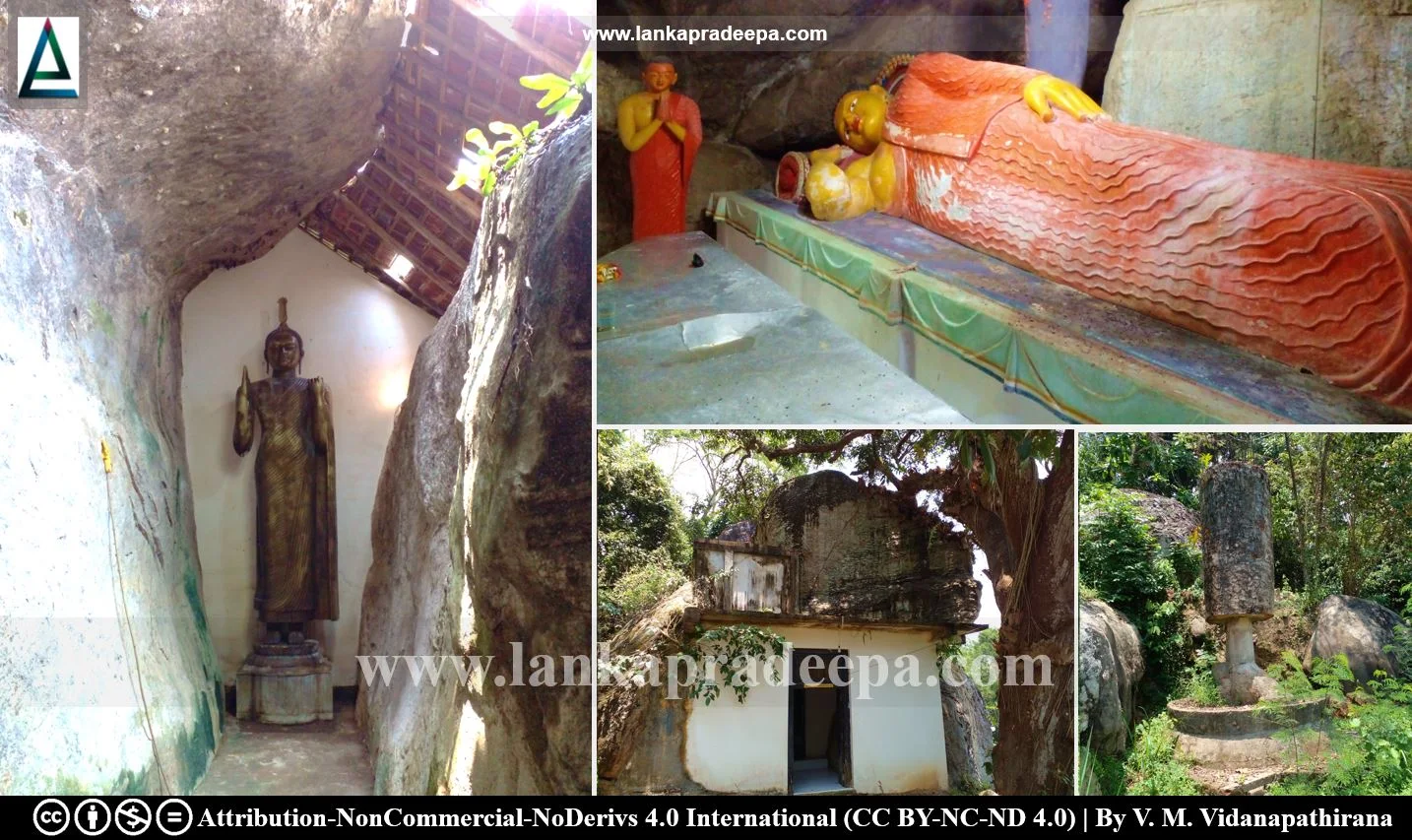
|
The Stupa and the rock-cut Buddha statue |
Athkanda Raja Maha Viharaya (Sinhala: ඇත්කඳ විහාරය, ගලබොඩ), is a Buddhist cave temple situated in Galaboda village near Kamburugamuwa in Matara District, Sri Lanka.
History
Built on a hillock with many caves around it, locals link the history of this temple to the reign of King Valagamba (103, 88-77 B.C.) of Anuradhapura (Abeyawardana, 2004; Ranaweera, 2015; Wikramaratne, 2015). It is said that the caves of this site were used by the king during the period when South Indian invaders ruled the Anuradhapura Kingdom (Abeyawardana, 2004; Ranaweera, 2015). Also, another folklore says that this is the ancient Athkanda Raja Maha Viharaya where Maliyadeva, the last Arhat of Sri Lanka lived (Abeyawardana, 2004; Ranaweera, 2015).
The Bodhi tree at the temple is believed to be a sapling brought from the Jaya Sri Maha Bodhi Tree at Anuradhapura (Wikramaratne, 2015). The cave temple consists of paintings and sculptures belonging to the traditional art style of the Kandyan Period (Ranaweera, 2015). Several ancient pottery pieces and bricks have been unearthed from the temple premises during excavations (Wikramaratne, 2015). Also, a crescent is found carved on the rock where the cave temple has been constructed (Wikramaratne, 2015).
A Protected Site
The ruins of buildings and other archaeological evidence found in the lands situated in the west and southwest of the Galagoda Ethkanda Purana Vihara and drip ledged cave in the premises of Vihara situated in the Grama Niladhari Division Kamburugamuwa North in the Divisional Secretary’s Division, Weligama are archaeological protected monuments, declared by the government Gazette notification published on 7 July 2016.

Related Posts
Read Also
References
Books, Government Gazette Notifications
1) Abeyawardana, H.A.P., 2004. Heritage of Ruhuna: Major natural, cultural and historic sites. Colombo: The Central Bank of Sri Lanka. ISBN: 955-575-073-4. p.62.
2) Ranaweera, D. D., 2015. Matara Urumaya (in Sinhala). ISBN: 978-955-30-6285-7. S. Godage & Bros. pp.128-129.
3) The Gazette of the Democratic Socialist Republic of Sri Lanka; Extraordinary. No: 1974/16. 7 July 2016. p.2A.
4) Wikramaratne, I., 2015. Pauranika Sthana Saha Smaraka: Matara Distrikkaya (In Sinhala). Department of Archaeology (Sri Lanka). ISBN: 955-9159-54-2. pp.25-26.
Location Map
Dynamic Google Map
Attribution
To Whom
LankaPradeepa.com extends its gratitude to Mr V. M. Vidanapathirana for providing the necessary photographs required for this article. All the photos are published here with the permission of the author.

